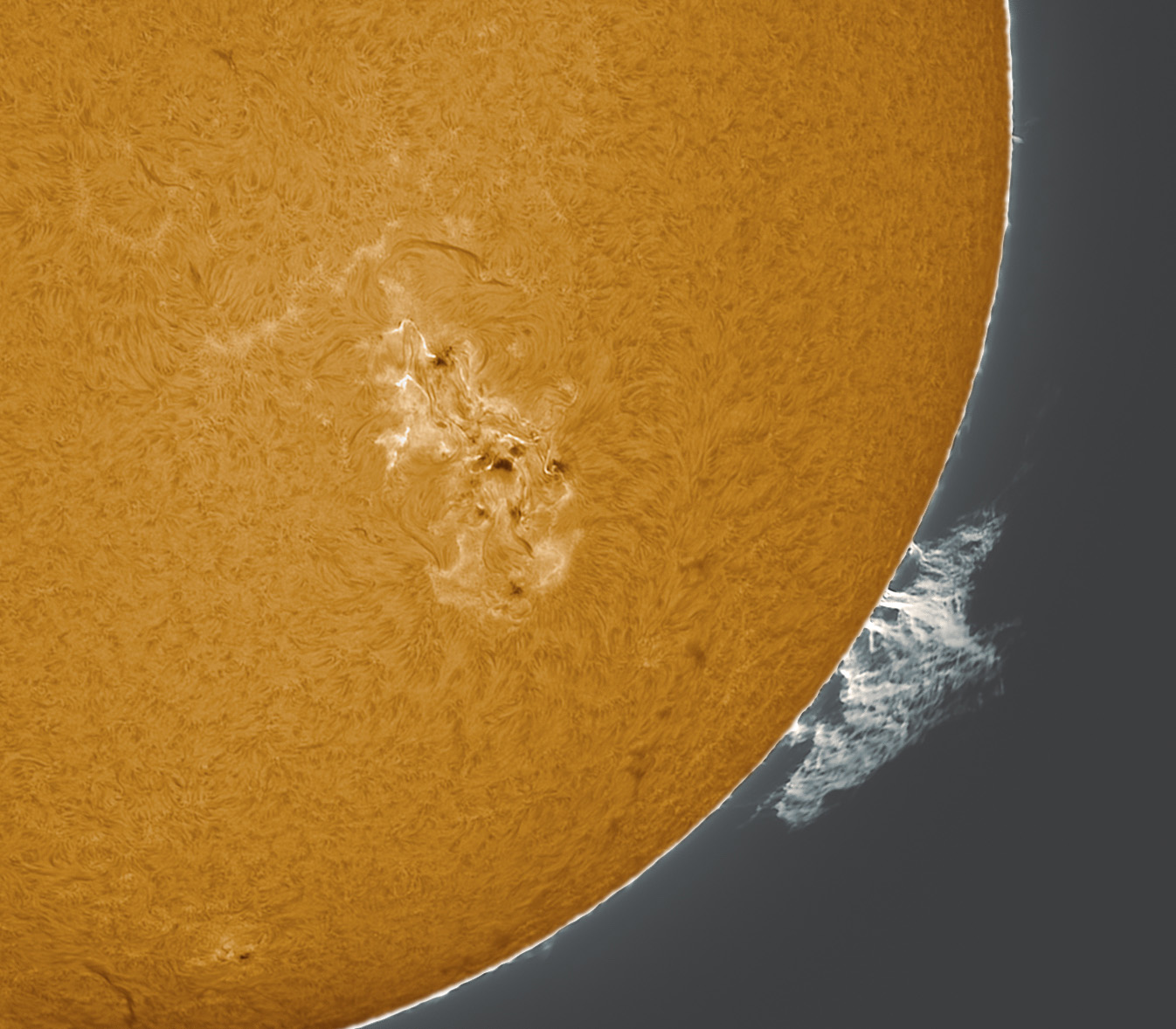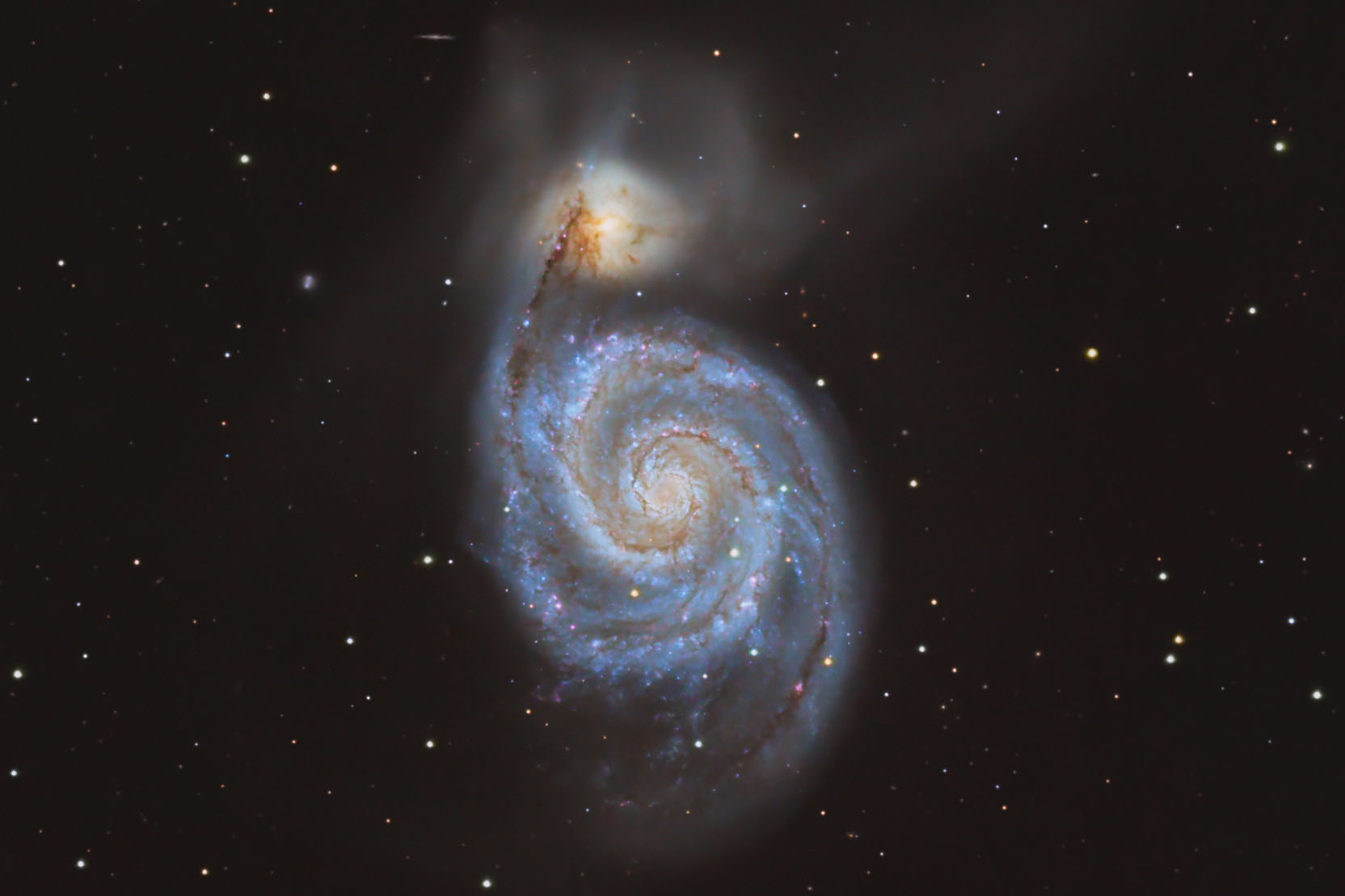Page 2 of 6
Re: Submissions: 2024 May
Posted: Wed May 08, 2024 5:11 am
by MariuszDurlej
Hello
The Milky Way with a view of the Tatra Mountains in Poland and a mountain stream is one of the most beautiful places I have photographed. Surrounded by a forest with the sound of flowing water, immersed in Egyptian darkness through which the stars and the Milky Way shine through. The temperature is close to zero and there is frost right behind the forest at the ground. Perfect conditions. And there's a meteor on the left side of the frame

When I was going down, I didn't expect the flowing stream to be so loud and make communication impossible, but despite this small obstacle, I managed to "catch the star"
Category/Tracked/Blended
Ha+RGB
Sky,Canon R+Sigma Art 28mm F2.8+Sky Watcher Star Adventure. ISO 800, 1x120s
Ha 3x120s, Canon 6D +sigma Art 28mm F1.8 ISO 3200
Reaching for the stars
https://scontent.fktw1-1.fna.fbcdn.net/ ... e=6640CB3E
Re: Submissions: 2024 May
Posted: Wed May 08, 2024 4:06 pm
by pineta1984
Waiting 16 million years to see something really seems like an infinite amount of time, that's exactly how long it took for the photons to reach the telescope. Sixteen million light-years from Earth, in the constellation Hunting Dogs, a galaxy is moving away from us at 308 km/s. The light from this galaxy left 16 million years ago and, at this time, the galaxy has already traveled several million km further. These photons have been traveling at the speed of light (300,000 km/s) for 16 million years to make it possible for us to see them and create this image. M94, its name, is a barred spiral galaxy (like our Milky Way) peculiar because it has two distinct zones, an inner ring, about 30,000 light-years in diameter, and an outer ring, about 45,000 light-years in diameter. In the inner ring there are constantly forming stars while, the outer ring, contains about 23 percent of the galaxy's mass and contributes 10 percent to the formation of new stars, this outer ring, however, forms stars much faster than the inner ring because it is more efficient. This ring, after careful study, was found to have been created by distortion of the inner ring.
The galaxy is presented “face-on” to us so we can see some of its reddish-blue nebulae inside.
The photo is a sum of about 40 hours of exposure time with:
Camera: ZWO ASI 6200 mono
Telescope: Tecnosky fast 300 mm - 12''
Filters: Chroma Technology HaRGB
Chroma Red 50 mm: 46×900″
Chroma Blue 50 mm: 43×900″
Chroma Green 50 mm: 49×900″
Chroma H-alpha 3nm Bandpass 50 mm: 24×900″
Mount: iOptron CEM 120
Location: Castillejar, Andalusia, Spain
Copyright: Alex Battu & Luca Barcaro
 M94 - Cat's Eye Galaxy
M94 - Cat's Eye Galaxy by
Astro Divers, su Flickr
Re: Submissions: 2024 May
Posted: Wed May 08, 2024 6:59 pm
by zombi
Hyades - rain-makers
 Hyades - rain-makers
Hyades - rain-makers by
.zombi., on Flickr
Imaging telescopes: Takahashi FSQ-106EDXIII
Imaging cameras: Moravian G3-16200EC
Accessories: Reducer-QE 0.73X
Mounts: Sky-Watcher NEQ6-Pro
Software: N.I.N.A. · PixInsight · Adobe Photoshop
Frames:
Baader Blue (B-CCD) 50 mm: 18×150″(45′)
Baader Green (G-CCD) 50 mm: 20×150″(50′)
Baader Red (R-CCD) 50 mm: 22×150″(55′)
Baader UV/IR Cut / Luminance 50 mm: 21×300″(1h 45′)
Photographic technique: LRGB
Integration: 4h 15′
Bortle Dark-Sky Scale: 4/5/6
Location: Borchów, Masłomiąca
Dates: 03-04.2024
Description:
The frame is a four-panel mosaic photographed at the end of the season, the times given are the total time of all panels.
Image Credit & Copyright: Przemysław Ząbczyk
Links:
http://www.astrobin.com/users/zombi/
https://www.astropolis.pl/tags/zombi/
Caldwell 41, Cr 50, Mel 25
Re: Submissions: 2024 May
Posted: Thu May 09, 2024 7:30 am
by WolfHeart
Milky Way Arcs Above Desert Rock
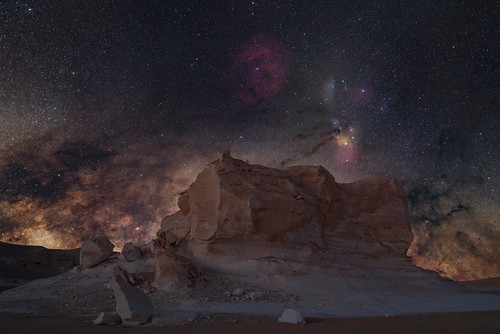 Milky Way Arcs Above Desert Rock
Milky Way Arcs Above Desert Rock by
Ahmed Waddah, on Flickr
In the midst of the New Valley Desert, I awaited the ascent of the galactic core. Then, like a cosmic curtain pulling back, the Milky Way emerges from darkness. It begins as a faint smudge above the jagged silhouette of the rock structure, then gradually blooms into a dazzling band arching across the sky.
Another blended composite from my night at a Bortle 1 location in the New Valley Desert. The sky shots were shot as the milky way started to appear and Antares, the red supergiant was high and visible. Foreground was shot just before sunrise.
Sky:
Nikon Z6II (modified)
Nikkor Z 14-24mm f/2.8 S
11x240" - f/2.8 - ISO 1250 - 24mm
iOptron Skyguider Pro
Foreground:
Nikon Z6II (modified)
Nikkor Z 14-24mm f/2.8 S
1x60" - f/7.1 - ISO 100 - 20mm
Date: 6th of April, 2024
Location: Al Wady Al Gaded Desert, New Valley Government, Egypt
Astrobin:
https://www.astrobin.com/kbd8db/
Social:
Facebook:
https://www.facebook.com/waddah.photography
Astrobin:
https://www.astrobin.com/users/WolfHeart/
IG:
https://www.instagram.com/waddahphotography/
Re: Submissions: 2024 May
Posted: Thu May 09, 2024 4:19 pm
by Aleix_Roig
Dear editors,
I would like to send you this image as a NASA APOD candidate. Thanks so much for your work and dedication.

In the Eridanus constellation, and close to the Orion constellation, we find a very interesting and pretty faint reflection nebula, IC 2118. Also known as the Witch Head nebula, IC 2118 is believed to be made of gas, and dust and is about 50 light-years across. Located around 900 light-years away from Earth, the Witch Head Nebula is illuminated by Rigel, the bright blue supergiant star in the constellation Orion. The blue color of the Witch Head nebula contrasts beautifully with the dusty red clouds around the nebula, creating a striking visual spectacle. These red clouds are galactic cirrus, galactic filamentary structures that surround our galaxy.
This 102h 25' image was acquired from my backyard observatory during several winter nights this 2024. I used my dual Takahashi FSQ setup in order to get double the data. One telescope, the FSQ85, was focused solely on Ha data in order to capture the faint galactic cirrus. More than 50 hours were needed to show the final detail. I find interesting trying to push the limits of my own amateur astrophotography work with such deep exposures that allows me to show several interesting details. If you look carefully, in the bottom right of the image (horizontal view) a galactic cirrus reveals the shape of a bat, just below the "mouth" of the witch. We called it pareidolia, but it's also a nice view of the deep universe. The other telescope, FSQ106, was used to capture the Luminance data along with the RGB.
Image details:
FSQ106:
L: 486 x 300" (40h 30')
RGB: (35,28,50 x 300") (9h 25')
FSQ85:
Ha: 630 x 300" (52h 30')
Calibrated with darks, flats and dark-flats.
Total exposure: 102h 25'
Moon at 30% (on average)
Image resolution: 1.46”/pixel
FOV (full image): 2º 31' x 1º 41'
Equipment:
FSQ106 EDX4 + ASI2600MM + LRGB Astrodon filters + Ha3nm Antlia - with ZWO EFW 7 pos
FSQ85 + ASI294MM + SHO LRGB Baader filters - with ZWO EFW 8 pos
Mesu200 mount
Guiding with ASI120MM and ZWO Mini Guide Scope
Aleix Roig, April 2024
Prades (Tarragona, Catalonia - Spain).
Re: Submissions: 2024 May
Posted: Thu May 09, 2024 7:04 pm
by Ottavi Giannella
Tuscany Dream
Hi everyone, I'll show you a corner of Italy under a splendid Milky Way
This location is in the Tuscany region, specifically in San Quirico d'Orcia.
Unfortunately, in our country there are not many areas left with a sky without light pollution
I took this image in June 2022
Canon Eos R
Canon RF 16mm
Minitrack LX
4 minutes for the sky
30 seconds for landscape
www.ottaviogiannella.com
Re: Submissions: 2024 May
Posted: Thu May 09, 2024 7:11 pm
by Ottavi Giannella
Ottavi Giannella wrote: ↑Thu May 09, 2024 7:04 pm
Tuscany dream
Hi everyone, I'll show you a corner of Italy under a splendid Milky Way
This location is in the Tuscany region, specifically in San Quirico d'Orcia.
Unfortunately, in our country there are not many areas left with a sky without light pollution
I took this image in June 2022
Canon Eos R
Canon RF 16mm
Minitrack LX
4 minutes for the sky
30 seconds for landscape
www.ottaviogiannella.com
Re: Submissions: 2024 May
Posted: Fri May 10, 2024 8:23 am
by Rafeee
Crescent moon and Observatory
Copyright: Rafael Schmall
https://www.astrobin.com/users/Rafeee/
The capture shows a 39-hour crescent moon trying to settle down behind the dome of the Zselici Park of Stars
This combination of bright crescent and ash-gray Earthlight is an interesting sight, as if a very pale full moon is in the picture, even though the 5-second exposure makes it so bright for our shadowy celestial companion.
Of course, as soon as the image was completed, this narrow sickle was observed visually, namely by turning the telescope dome back on it
Image Details:
Equipment: Canon EOS6D, RCanon EF 200mm f/2.8L USM, Omegon MiniTrack LX3
Exif data: 2x5sec, ISO400, f4, 200mm
Location: Hungary, Zselic Starry Sky Park, Zselic Park of Stars
Re: Submissions: 2024 May
Posted: Fri May 10, 2024 10:22 am
by H Ilyas
Please see the below submission for your perusal. I hope you enjoy!
Sunspots AR3661 and AR3663 and a red hot Prominence
Technical details
Image 1: Inverted Mono image
Image 2: Inverted / false colour added
Date: May 7, 2024
Time: 2:47pm
Frames: 300
FPS: 87
Exposure per frame: 11.5 ms
Imaging Telescope: TS-Optics CF-APO 130mm f/7
Camera: ZWO ASI432MM
Mounts: iOptron CEM70
Filters: Altair Hydrogen Alpha D-ERF · DayStar Quark (Chromosphere model)
Software: AutoStakkert! · ImPPG (Image Post-Processor) · PixInsight
Many thanks for your consideration!
Credit: Hamza Ilyas
Re: Submissions: 2024 May
Posted: Fri May 10, 2024 4:16 pm
by behyar
Re: Submissions: 2024 May
Posted: Fri May 10, 2024 7:51 pm
by sternklar
Whirlpool Galaxy M 51 in Canes Venatici, photographed from Switzerland
https://sternklar.ch/images-webpages/Fo ... Apr-24.htm
M 51 in Canes Venatici – the classical spiral of the night sky.
Exposure data:
ZWO FF130 Flatfield APO Refractor 130mm @ f/7.7, ASI 6200MM Pro, Exposure time: 46 x 5 min. L, 28 x 5 min. R, 15 x 5 min. G, 15 x 5 min. B (Total: 8 hours and 40 minutes).
ZWO AM 5 Mount, March 7 and April 11 – 13 2024.
Copyright: Manuel Jung,
https://sternklar.ch
Re: Submissions: 2024 May
Posted: Sat May 11, 2024 6:03 am
by andrea_girones
A Star Party to Remember
What a party! At our spring public outreach astronomy event many visitors came to see the moon and stars through a telescope. Imagine their surprise when, not only did the Aurora appear to the south, ( we live in Ottawa Canada) but the auroral corona exploded over our heads raining down on us with glorious light and colour. Red and green streaks were visible across the sky and we think we even saw STEVE. With a G3 level storm and a planetary KP8 index, May 10th 2024 was a night to remember.
Shot with a Nikon Z6ii and Laowa 15mm lens at f/2.8 3 sec exposures aty ISO 1600.
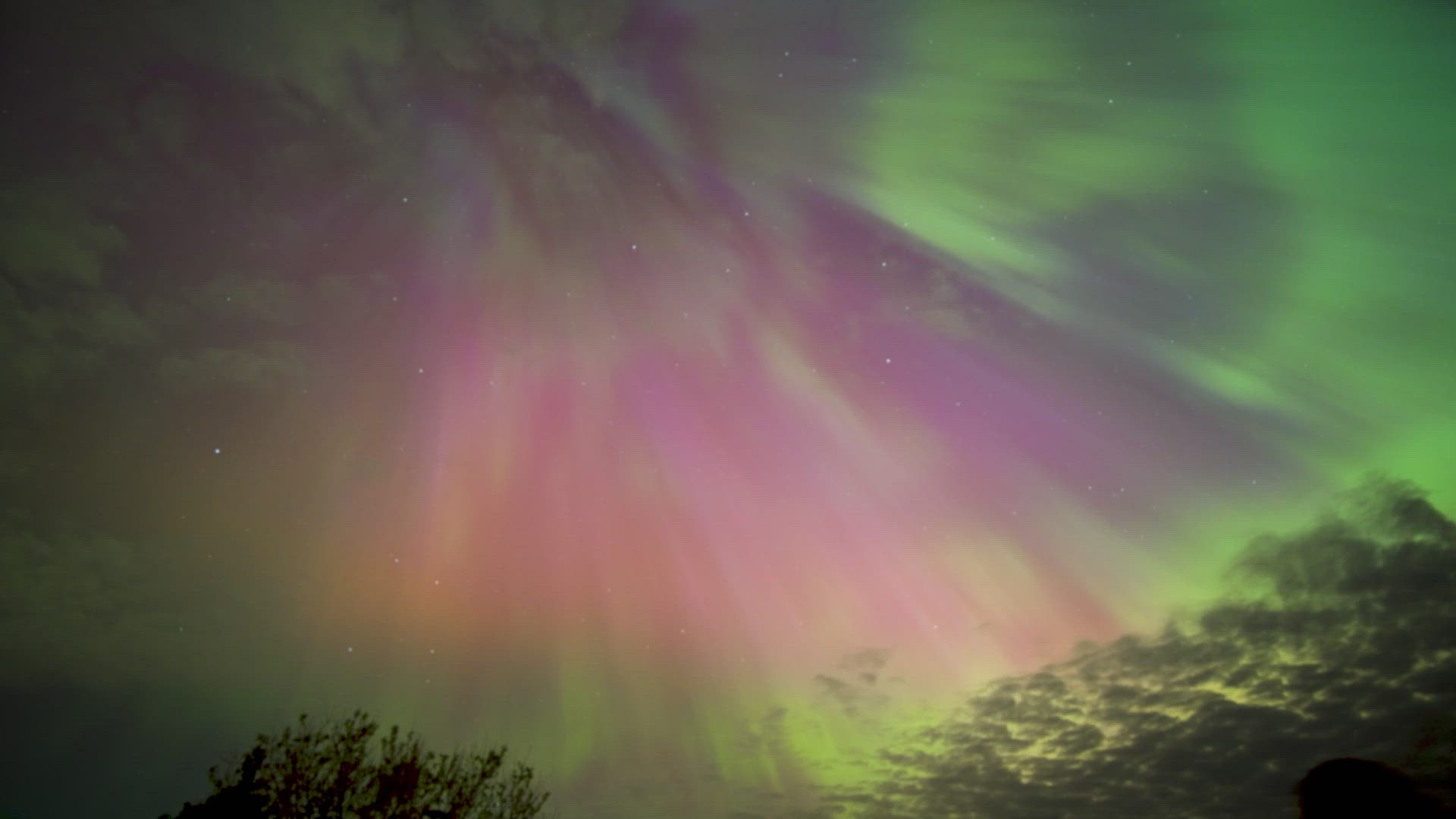 May Aurora HD
May Aurora HD by
Andrea Girones, on Flickr
Aurora Borealis in England
Posted: Sat May 11, 2024 6:34 am
by ChrisKotsiopoulos
This was shot in the Stonehenge area. Almost the entire sky was filled with colours. You could see these huge rays of light and colour painting the sky red and green. I stayed up all night capturing the Lights.
More info and photos:
https://spacetinkerer.com/tinkering-sto ... n-england/
Re: Submissions: 2024 May
Posted: Sat May 11, 2024 11:26 am
by H Ilyas
Inspired by a recent episode of "StrangeScienceQuestions" with Robert Nemiroff, I thought I would experiment with this array of proms from data I collected in the last week of April. It came out very cool indeed!
Pink Proms of April 30, 2024
Technical details
Image 1: Inverted, False colour added
Image 2: Inverted, Mono image
Date: April 30, 2024
Time: 2:27pm
Frames: 300
FPS: 46
Exposure per frame: 21.4 ms
Imaging Telescope: TS-Optics CF-APO 130mm f/7
Camera: ZWO ASI432MM
Mounts: iOptron CEM70
Filters: Altair Hydrogen Alpha D-ERF · DayStar Quark (Chromosphere model)
Software: AutoStakkert! · ImPPG (Image Post-Processor) · PixInsight
Many thanks for your consideration!
Credit: Hamza Ilyas
Location: London, UK
Re: Submissions: 2024 May
Posted: Sat May 11, 2024 12:02 pm
by Astrodude13
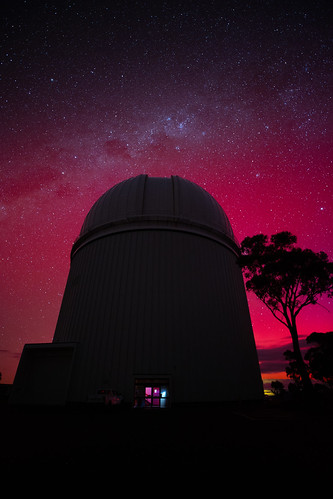 Aurora Australis Over & AAT
Aurora Australis Over & AAT by
Blake Estes, on Flickr
I would like to share with you an incredible image of the Aurora Australis taken during the powerful solar storm this evening on 05/11/24. The aurora was visible as clearly red behind the Anglo Australian Telescope. This was also the first Aurora that I have ever seen and I was totally blown away!
Camera Details:
Canon 1DX MKIII
Canon EF 16-35L III @ f/2.8
ISO 3200
30" Exposure
Re: Submissions: 2024 May
Posted: Sat May 11, 2024 12:04 pm
by VisualUniverse
Photographer: Phillip L Jones
Location: Devils Tower National Monument, Wyoming, USA
Captured with a Nikon Z8 and a Nikon Z 20mm f/1.8 S lens

Captured with a Nikon Z8 and a Venus Laowa 15mm f/2 Zero-D lens
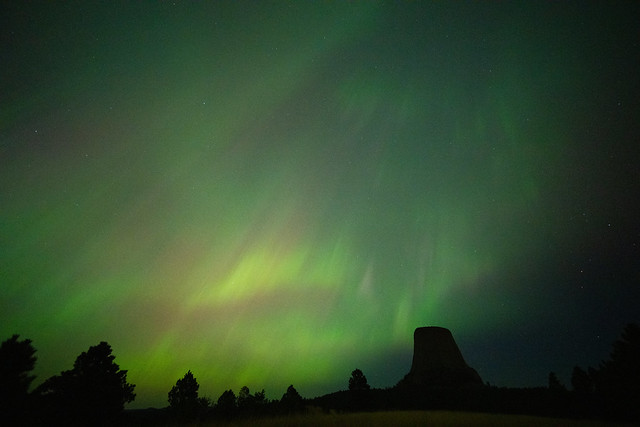
Captured with a Nikon Z8 and a Venus Laowa 15mm f/2 Zero-D lens

Captured with a Nikon Z8 and a Venus Laowa 15mm f/2 Zero-D lens
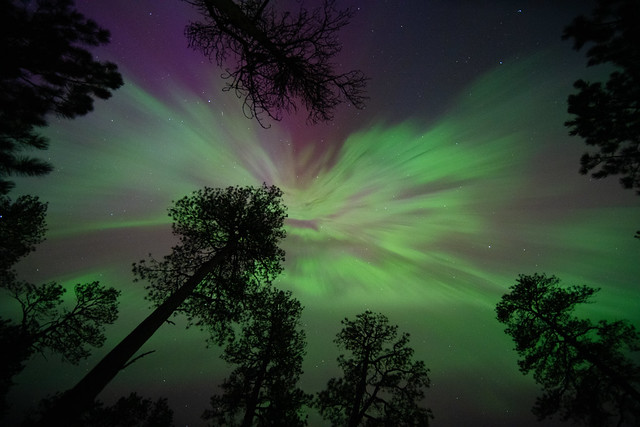
Sunspot AR3664 - May 10th
Posted: Sat May 11, 2024 1:43 pm
by Efrain Morales
Very active region Sunspot AR3664 and a large prominence at the limb on May 10th.
Re: Submissions: 2024 May
Posted: Sat May 11, 2024 3:25 pm
by a.carrozzi
A photo of the May 10th, 2024 aurora (it's more likely a SAR, but that name doesn't sound as good).
If someone had told me that I would see the an aurora borealis from a hillside overlooking the Po Valley, in Italy, I probably would not have believed them. Still, thanks to the remarkable solar activity of the last few days, this phenomenon has been visible even at our latitudes. It is an extremely rare event that last appears to have occurred in January 1938, a full 86 years ago!
The lights in the background are Scandiano and the Reggio Emilia area.
Technical data: Canon EOS 6D with Samyang 14mm, 7 shots of 2s at 3200 ISO f/2.8.
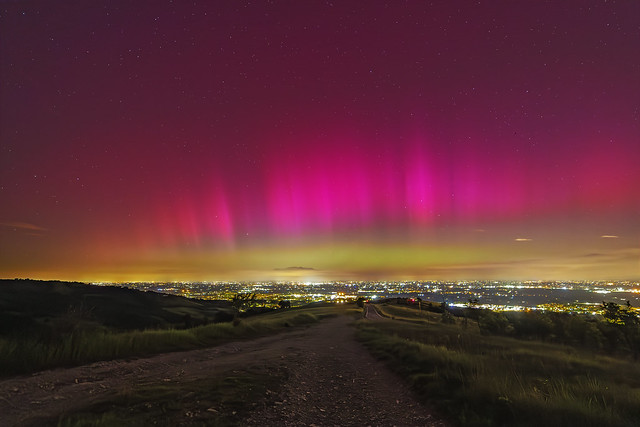 Northern lights over the Po valley
Northern lights over the Po valley by
Alessandro Carrozzi, su Flickr
Re: Submissions: 2024 May
Posted: Sat May 11, 2024 4:18 pm
by andrea_girones
The Auroral Phoenix
It is often said that during the peak of the Aurora the "wings" of fiery birds can be seen flying though the night sky.
The dramatic and powerful Kp8 aurora of May 11, 2024 was full of movement, flashes of light and pulsations.
And out of the magnetic chaos rose the fiery auroral phoenix.
It was a sight to behold for all who witnessed it.
From my Ottawa Canada backyard the morning of May 11, 2024, single exposure NIkon Z6ii 15mm Laowa lens.
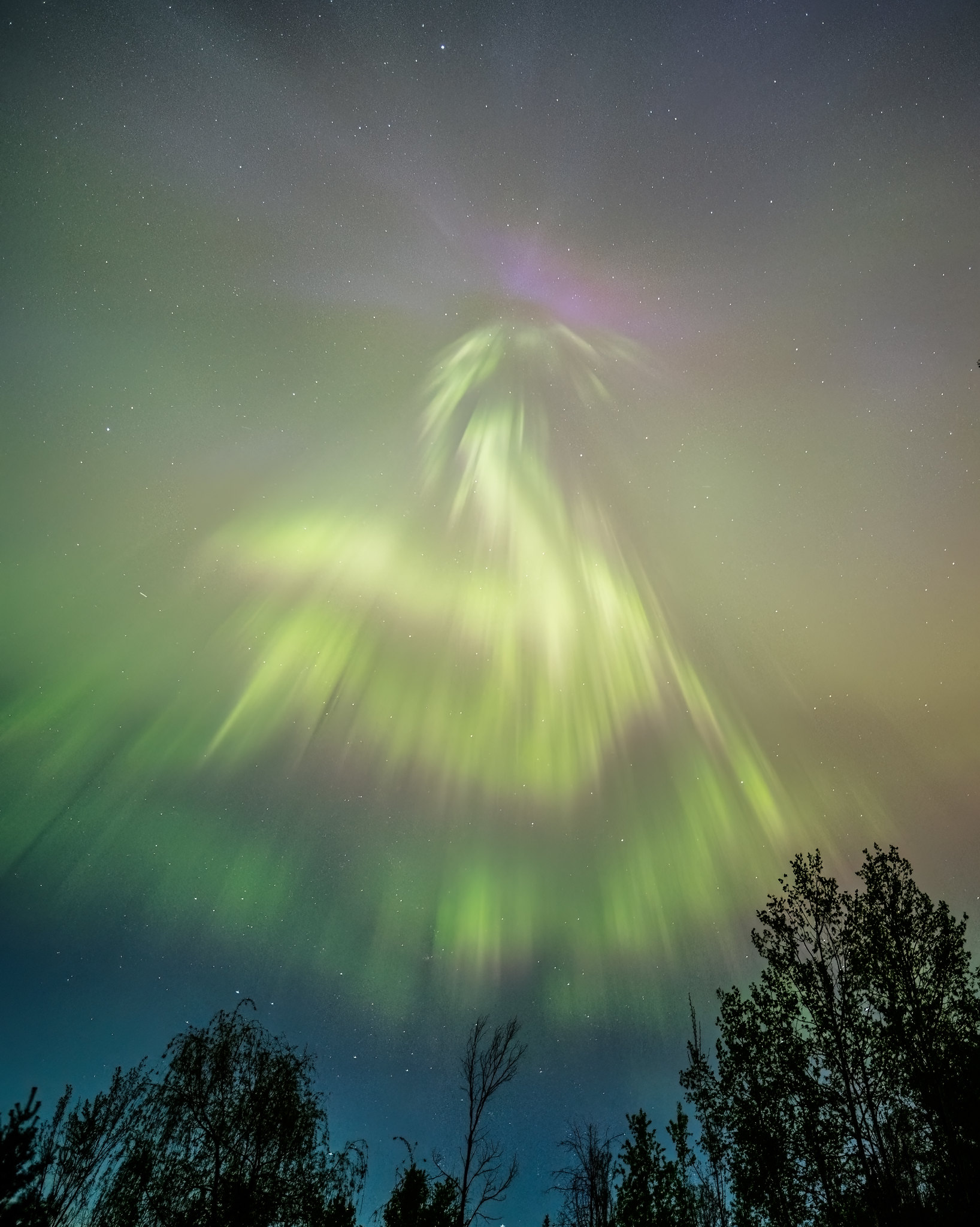 The Auroral Phoenix
The Auroral Phoenix by
Andrea Girones, on Flickr
Re: Submissions: 2024 May
Posted: Sat May 11, 2024 4:35 pm
by Herbert_Walter
NGC 5128 (Centaurus A) - galaxy in constellation Centaurus
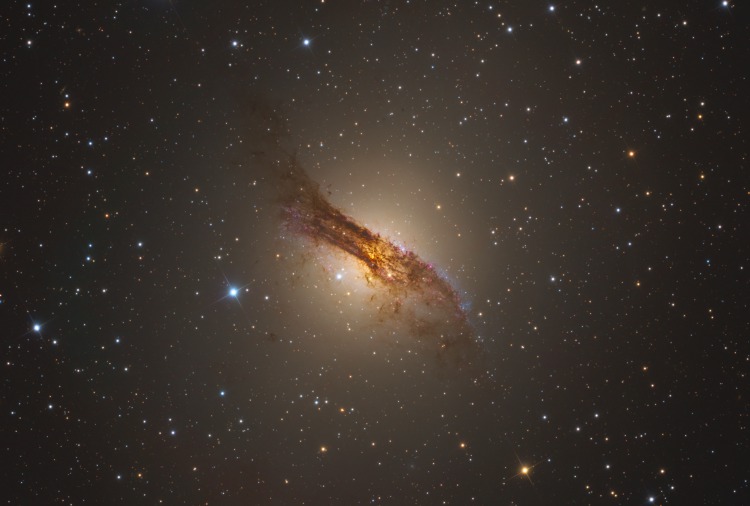
Centaurus A (also known as NGC 5128 or Caldwell 77) is a galaxy in the constellation of Centaurus.
It was discovered in 1826 by Scottish astronomer James Dunlop , in New South Wales, Australia.
There is considerable debate in the literature regarding the galaxy's fundamental properties such as its Hubble type (lenticular galaxy or a giant elliptical galaxy) and distance (11–13 million light-years). NGC 5128 is one of the closest radio galaxies to Earth, so its active galactic nucleus has been extensively studied by professional astronomers.
The galaxy is also the fifth-brightest in the sky, making it an ideal amateur astronomy target. It is only visible from the southern hemisphere and low northern latitudes.
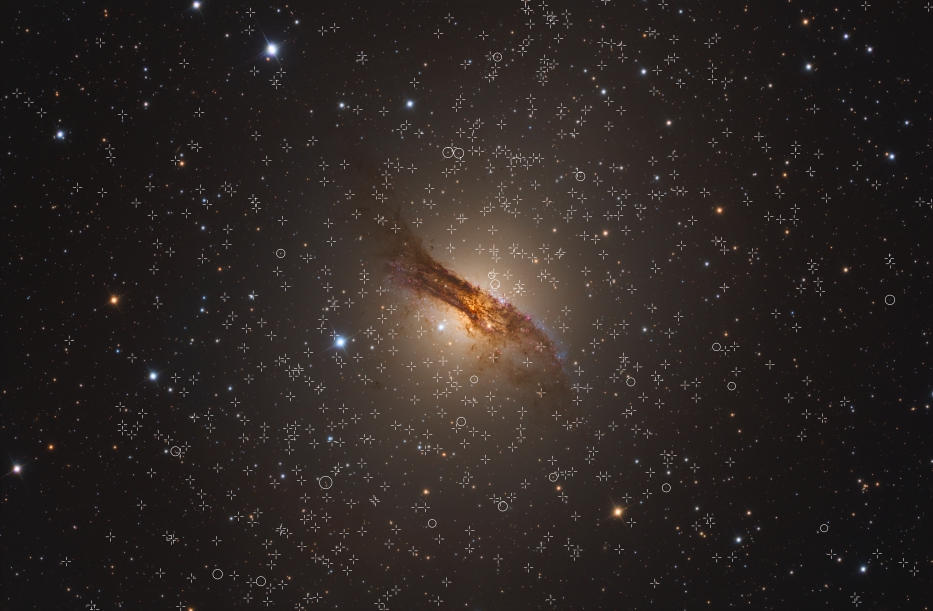
NGC 5128 is the nearest giant elliptical available for study at a 3.8 Mpc distance from us. Its close proximity provides the opportunity to perform a detailed study of its globular cluster system at a level of detail that is not possible in other giant ellipticals at present. At present there are over 600 globular clusters within this galaxy that have been confirmed.
In this image many Globular Cluster are visible ...
More info and large(!) images:
https://www.skypixels.at/ngc5128_MPugh_info.html
Re: Submissions: 2024 May
Posted: Sat May 11, 2024 5:29 pm
by VisualUniverse
Photographer: Phillip L Jones
Location: Devils Tower National Monument, Wyoming, USA
Captured with a Nikon Z8 and a Nikon Z 14-24mm f/2.8 S lens
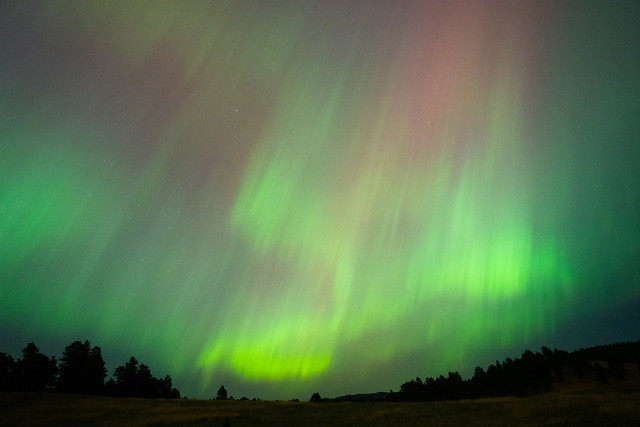
Captured with a Nikon Z8 and a Venus Laowa 15mm f/2 Zero-D lens

Captured with a Nikon Z8 and a Nikon Z 14-24mm f/2.8 S lens

Captured with a Nikon Z9 and a Venus Laowa 15mm f/2 Zero-D lens

Captured with a Nikon Z8 and a Nikon Z 20mm f/1.8 S lens
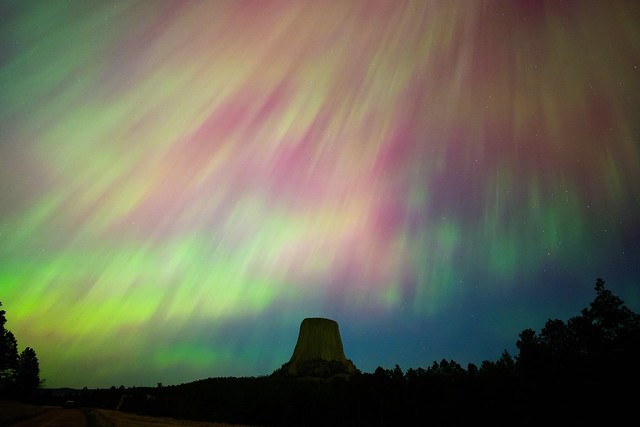
Captured with a Nikon Z8 and a Venus Laowa 15mm f/2 Zero-D lens
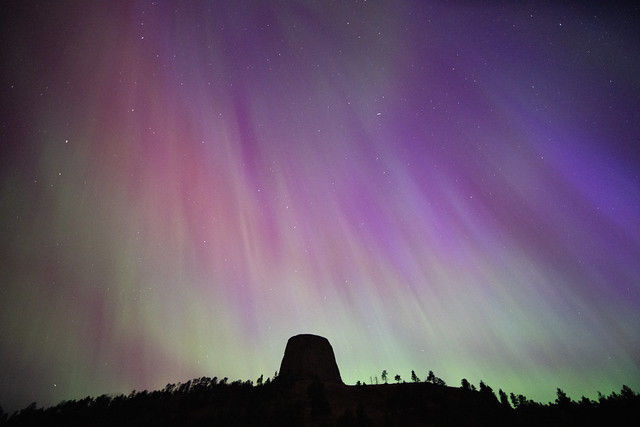
Re: Submissions: 2024 May
Posted: Sat May 11, 2024 5:43 pm
by moladso
AR3664, May 10/2024/b]
Inverted Ha solar image.
Jaime Fernandez
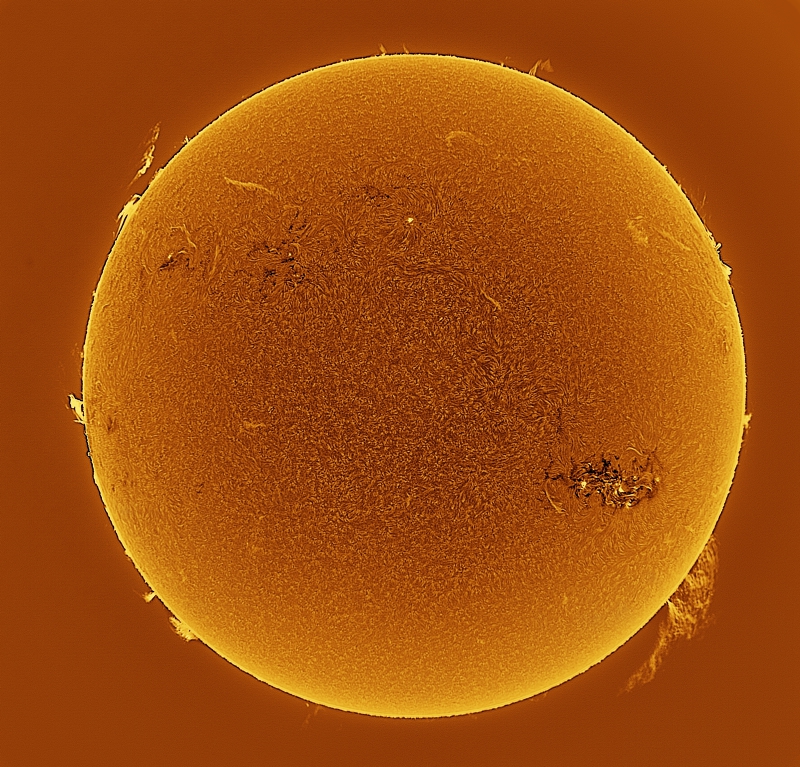
Click on image for full sized, 1800 pixel, solar image or the following link: https://www.astronomica.es/imagen_big.a ... =587_3.jpg
During these days the sun is showing a very intense activity. One of the major active regions is AR3664, the source of several Coronal Mass Ejection (CMEs) of Grade 5 that hit the Earth by 10th-12th May, producing huge Auroras seen in latitudes as low as spanish Canary Islands (28º).
Solar image inverted tones.
Capture and processing details:
Telescope Coronado PST 40mm, camera ASI 178MM, captured with FireCapture, 4000 frames SER video @25fps (16bit), processed with Autostakkert4, ImPPG, Registax 6 and PixInsight 1.8 Ripley. Taken on 10/may/2024 from Valdemorillo (Madrid, Spain), at an height 811 mts ASML.
Credit: Jaime Fernandez https://www.astronopithecus.es
Enjoy it.
Re: Submissions: 2024 May
Posted: Sat May 11, 2024 6:31 pm
by moladso
AR3664, May 11/2024/b]
Ha solar image.
Jaime Fernandez
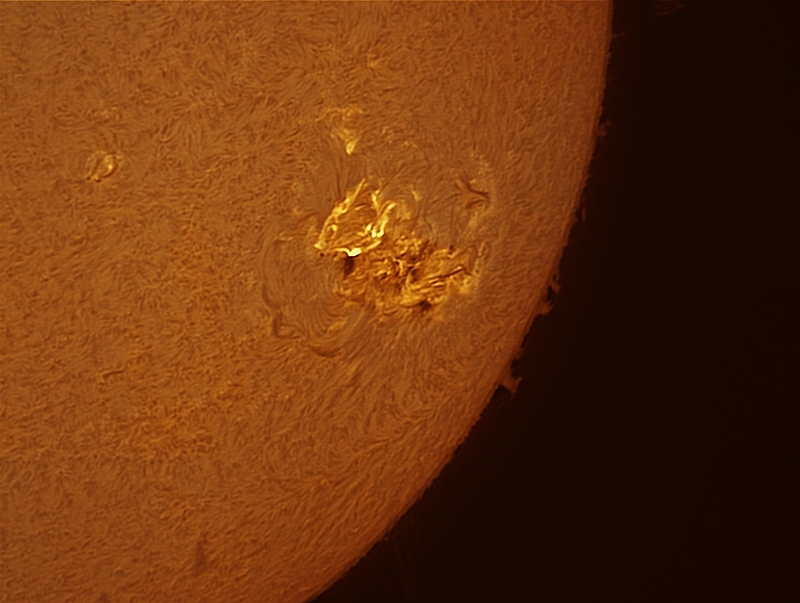
Click on image for full sized, 1800 pixel, solar image or the following link: https://www.astronomica.es/imagen_big.a ... =589_3.jpg
During these days the sun is showing a very intense activity. One of the major active regios is AR3664, the source of several Coronal Mass Ejection (CMEs) of Grade 5 that hit the Earth by 10th-12th May, producing huge Auroras seen in latitudes as low as spanish Canary Islands (28º).
Solar image inverted tones.
Capture and processing details:
Telescope Coronado PST 40mm, camera ASI 178MM, Barlow Celestron Ultima 2x, captured with FireCapture, 4000 frames SER video @25fps (16bit), processed with Autostakkert4, Registax 6 and PixInsight 1.8 Ripley. Taken on 11/may/2024 from Valdemorillo (Madrid, Spain), at an height 811 mts ASML.
Credit: Jaime Fernandez https://www.astronopithecus.es
Enjoy it.
Re: Submissions: 2024 May
Posted: Sun May 12, 2024 1:44 am
by andrea_girones
An Auroral Phoenix (redux)
It is often said that during the peak of the Aurora the "wings" of fiery birds can be seen flying though the night sky.
The dramatic and powerful Kp8 aurora of May 11, 2024 was full of movement, flashes of light and pulsations.
And out of the magnetic chaos rose the fiery auroral phoenix.
It was a sight to behold for all who witnessed it.
From my Ottawa Canada backyard the morning of May 11, 2024, single exposure NIkon Z6ii 15mm Laowa lens.
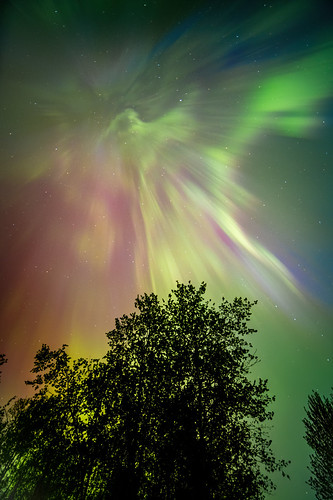 Auroral Phoenix (2)
Auroral Phoenix (2) by
Andrea Girones, on Flickr
https://live.staticflickr.com/65535/537 ... 7e4e_k.jpg
Re: Submissions: 2024 May
Posted: Sun May 12, 2024 9:31 am
by Maciej Enerlich
The photo depicts the Northern Lights captured in the village of Piasutno in Warmia and Mazury, Poland. The picture was taken on the night of May 10-11, 2024, during a G5 geomagnetic storm. It was the most beautiful spectacle I've ever seen. Typically in Poland, when space weather is favorable, you can see the aurora on the northern horizon, but that night the aurora spread practically across the entire sky and was clearly visible to the naked eye along with its colors.I took the photo with a Canon 60D and a Samyang 14mm F2.8 lens. It's a 5-second exposure at ISO 800 and F4.
Afterward, in Adobe Photoshop, I removed the noise that occurred on the camera's sensor.
 https://cdn.astrobin.com/thumbs/p_Wr4qb ... TZ0INm.jpg
https://cdn.astrobin.com/thumbs/p_Wr4qb ... TZ0INm.jpg





